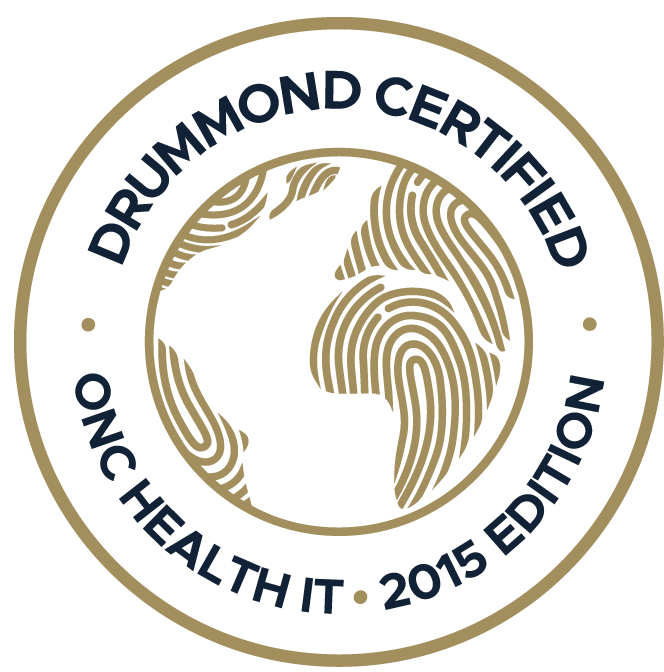Is your practice struggling to overcome operational bottlenecks despite trying everything from hiring extra staff to outsourcing certain tasks? A reliable healthcare practice management software might be the answer...
Healthcare setups are increasingly adopting patient portals to facilitate their patients. Research supports the narrative that patients consider the patient portal a helpful tool for achieving optimal outcomes. Therefore, patient portals are a necessity for medical practices today, benefiting both the patient and the practice overall. If your practice hasn’t implemented a patient portal, chances are you and your patients are missing out on some convenient features.
Let's take a more in-depth look at why medical practices should be using patient portals in their practice today:
Why Should Medical Practices Use a Patient Portal?
Researchers have dedicated extensive analysis of the impact of patient portal use in the healthcare sector, and there is mounting evidence that EHR-integrated patient portal offers numerous benefits for the practices as well as the patients. Here is how patient portals serve as a valuable resource in medical practices.
- Enhances Patient Engagement
One of the standout features of patient portals is their ability to enhance patient engagement in their healthcare journey. Patient engagement refers to the active participation of individuals in managing their own health and interacting with healthcare providers.
Portals empower patients to take more of an active role in their healthcare and promote a more patient-centered relationship, resulting in better outcomes, patient satisfaction, and engagement. A recent study highlighted the usefulness of patient portals in enhancing patient engagement, considering that these portals have all the essential features required for convenient provider-patient interaction.
As a place for patients to conveniently access and provide health information, schedule appointments, see test results, request medication refills, send secure messages, and pay for care, patient portals are a key driver in patients feeling more engaged in their healthcare.
- Streamlines Office Workflow
Imagine the time saved for your staff when a patient uses the patient portal to schedule an appointment or send a secure message to ask a question, as opposed to calling in over the phone. Tasks completed online by the patient present significant time savings for a medical practice.
One of the primary ways patient portals enhance workflow is through appointment scheduling. Patients can schedule their appointments conveniently, reducing the administrative burden of managing phone calls and manual scheduling. Moreover, automated appointment reminders sent via the portal significantly reduce no-show rates, improving the overall efficiency of the practice.
Patient portals provide a secure avenue for patients to access their medical records, including test results, diagnoses, and treatment plans. In a 2023 survey study, it was found that 95% of the patients prefer receiving their test results through a patient portal. This access reduces the time-consuming task of responding to record requests and queries, as patients can independently retrieve their information whenever needed.
- Reduces Costs
Healthcare practices bear substantial administrative costs, which involve labor-intensive, paper-based processes. Patient portals streamline many of these tasks, such as appointment scheduling, billing inquiries, and medical record requests. Moreover, with patients handling these interactions online, administrative staff can redirect their efforts to more critical responsibilities, ultimately reducing labor costs.
Furthermore, missed appointments can result in lost revenue and inefficiency for healthcare providers. Patient portals allow for automated appointment reminders, reducing the number of no-shows. This results in better time management and more effective use of healthcare resources, which directly impacts the financial health of the practice.
Additionally, administrative errors, such as transcription mistakes and appointment mix-ups, can have financial repercussions. Patient portals allow patients to review and confirm their appointment details, reducing the likelihood of administrative errors. This, in turn, saves the practice time and resources spent on rectifying such mistakes.
- Improves Patient-Provider Interaction
Effective communication between patients and healthcare providers is fundamental to delivering quality care. Patient portals have emerged as a powerful tool that significantly enhances patient-provider interaction. Thus, it fosters collaboration and improves the overall healthcare experience.
Moreover, patient portals offer a secure environment for patients to communicate with their healthcare providers. Patients can send messages to their doctors, nurses, or administrative staff for inquiries, appointment requests, or to seek medical advice. This direct line of communication promotes prompt responses and addresses patient concerns efficiently.
Many patient portals provide a convenient feature for scheduling appointments. Patients can view available time slots, choose a suitable appointment, and receive confirmation—all without making a phone call. This feature simplifies the appointment-setting process and allows patients to select times that align with their schedules.
- Aids in Optimal Patient Outcomes
Patient portals are more than just a convenient way to interact with healthcare providers; they also play a crucial role in achieving optimal patient outcomes.
Patient portals grant patients easy access to their health information, such as test results, medical histories, and care instructions. This accessibility empowers patients to stay informed about their conditions, treatments, and progress. Informed patients are more likely to actively participate in their healthcare journey and adhere to prescribed therapies.
Moreover, effective medication management is crucial for patients with chronic illnesses or complex medication regimens. Patient portals include features for reviewing current medication lists, dosages, and prescription refills. Thus, it helps reduce the risk of medication errors and promotes medication adherence, essential for maintaining health and preventing complications.
Practice EHR - ONE With Integrated Patient Portal!
Practice EHR aims to leverage technology to help healthcare practices achieve their goal of patient satisfaction and optimal clinical outcomes. With a 100% cloud-based EHR-integrated patient portal, Practice EHR ensures enhanced patient engagement, reduced administrative costs, and improved patient-provider interaction. Moreover, the intuitive interface of Practice EHR’s patient portal means easy navigation. Furthermore, onboarding is less hassle with our round-the-clock available customer support services!
Prioritize patient satisfaction by incorporating an EHR-integrated patient portal into your medical practice. REQUEST A DEMO today!
Topics: Integrated EHR, Healthcare Office Management, Small Practice, digital age, Cloud-based EHR, E-Prescribing, EHR, EHR Scheduling, Patient Portal
RECENT POSTS



TOPICS
- EHR Solution (191)
- EHR (124)
- digital age (117)
- Patient Care (116)
- Medical Billing (110)
- Specialty-Specific EHR (110)
- Industry Update (97)
- Technology in Healthcare (84)
- EHR Features (79)
- Small Practice (77)
- Medical billing services (72)
- HIPAA Security (62)
- Integrated EHR (62)
- RCM (62)
- New Technology (44)
- Cloud-based EHR (43)
- Telemedicine (42)
- Healthcare Office Management (40)
- Practice EHR News (38)
- Kiosk (31)
- Revenue Cycle Management (28)
- AI Solutions (23)
- ePrescribing (21)
- AI Scribing (16)
- Best EHR Software (16)
- EMR (12)
- Practice Management Software (12)
- AI-powered Medical Billing (10)
- Client Favorites (10)
- Practice Automation (10)
- TeleVisit (10)
- The ONE (10)
- AI EHR (9)
- Switching to New EHR (9)
- MACRA/MIPS (8)
- Patient Portal (8)
- Urgent Care (8)
- AI Scribe (7)
- Best EHR Practice (7)
- EHR Integration (7)
- Psychiatry EHR (7)
- E-Prescribing (6)
- Product Updates (6)
- events (6)
- AI scanning (5)
- MIPS (5)
- Automated Health Tools (4)
- HIPAA (4)
- Insider (4)
- Internal Medicine EHR (4)
- MIPS Reporting (4)
- Mobile EHR (4)
- Orthopedics EHR (4)
- Podiatry (4)
- Podiatry EHR (4)
- Telehealth Platform (4)
- Chiropractic EHR (3)
- Digital Experiences (3)
- EHR Flaws (3)
- EHR Implementation (3)
- EHR for Chiropractors (3)
- EHR for Small Practices (3)
- Family Medicine EHR (3)
- Integrated Practice Management (3)
- Medical Practice Management Software (3)
- Patient Check-in Kiosk (3)
- PracticeEHR GO App (3)
- Regulatory Updates (3)
- Telehealth Platforms (3)
- Clearinghouse (2)
- Dermatology EHR (2)
- EHR Scheduling (2)
- Eligibility Verification in Medical Billing (2)
- Foot and Ankle Care (2)
- Foot and Ankle EHR (2)
- Health records 101 (2)
- Medical Coding Services (2)
- Medical Credentialing (2)
- Multilingual AI Scribe (2)
- Quality of Patient Care (2)
- Reporting Under MIPS (2)
- Risk and Liability in Medical Settings (2)
- What Works Clearinghouse (2)
- AI Scan (1)
- Bariatric EHR (1)
- Behavioral Health Practices (1)
- Billing Communication (1)
- Billing for Private Practices (1)
- Cardiology EHR (1)
- Cash Flow (1)
- Cashless Payments (1)
- Charting (1)
- Data Security (1)
- Dos and Don'ts (1)
- EHR Guides (1)
- EHR KPIs (1)
- EHR Questions to Ask (1)
- EHR Transition (1)
- EHR for Chronic Illness (1)
- EMR vs EHR Difference (1)
- ENT EHR (1)
- Endocrinology EHR (1)
- Family Medicine (1)
- Gastroenterology (1)
- Gastroenterology EHR (1)
- General Surgery EHR (1)
- Geriatric AI scribe (1)
- Geriatrics EHR (1)
- Guides (1)
- Healthcare Compliance Certification (1)
- Healthcare Practice Office Management (1)
- Help Center Videos (1)
- Insurance Reimbursement (1)
- KPI (1)
- Key Performance Indicators (1)
- Lab Processing (1)
- MACRA (1)
- Medical Billing Partner (1)
- Nephrology EHR (1)
- Neurology EHR (1)
- Pain Management EHR (1)
- Pediatrics EHR (1)
- Physical Therapy EHR (1)
- Practice Cash Flow (1)
- Practice Efficiency (1)
- Pulmonology EHR (1)
- Reconsider Your EHR (1)
- Simplify Practice Management (1)
- Staffing in Healthcare (1)
- Switch Medical Billing Providers (1)
- Urgent Care Medical Billing (1)
- Urology EHR (1)
- Voice-Activated AI Scribe (1)
- insurance claim denials (1)









